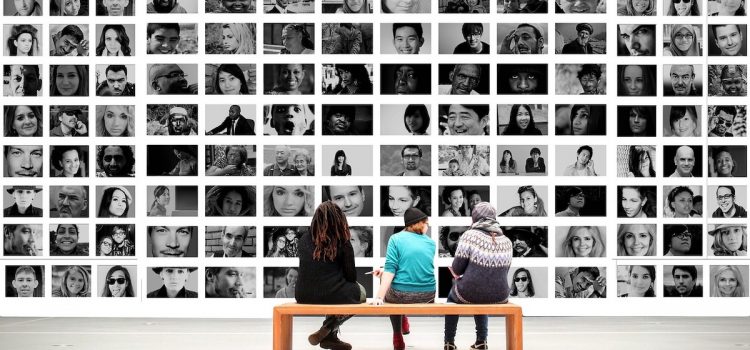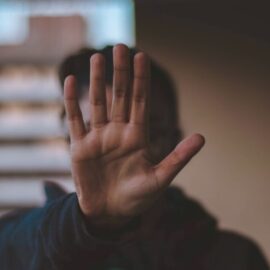

This article is an excerpt from the Shortform book guide to "Rebel Ideas" by Matthew Syed. Shortform has the world's best summaries and analyses of books you should be reading.
Like this article? Sign up for a free trial here.
What is homophily? What are some examples of the negative consequences of homophily?
In his 2019 book, Rebel Ideas, Matthew Syed explains why cognitively diverse groups are superior to homogeneous ones. According to Syed, homogeneity can lead to dangerous outcomes, including homophily, which means our tendency to surround ourselves with like-minded people.
Read on to learn what homophily is, including some examples from Syed’s book Rebel Ideas.
What Is Homophily?
Using his insights from diversity science, Matthew Syed examines the dangers posed by homogeneity in his book Rebel Ideas. In this article, we’ll discuss one of those dangers: homophily. So, what is homophily? According to Syed, homophily is our tendency to surround ourselves with similar, like-minded people. He claims that homophily leads to collective blindness because it creates groups that only know small portions of a problem. Below, we’ll further explore the phenomenon of homophily and the dangers it poses to society.
What Does It Do?
Syed acknowledges that homophily is understandable. After all, it’s comforting to be surrounded by people who validate our perspectives. Because people similar to us often share our blind spots, however, homophily creates groups with overlapping blindnesses. For example, a fashion company whose board only includes older people might miss out on fashion trends that are popular among younger populations.
(Shortform note: Researchers distinguish between two types of homophily: status homophily and value homophily. Status homophily occurs across demographic lines, creating groups of largely the same race, gender, age, or religious affiliation. On the other hand, value homophily creates groups with similar internal dispositions, such as those with similar behavior, beliefs, and aspirations.)
Moreover, Syed argues that such groups are prone to mirroring: Members reinforce each others’ perspectives, including blind spots. They become increasingly dogmatic about views that are often incomplete.
To illustrate, Syed cites a study involving teams that sought to solve a fictional “murder mystery”; half of these teams were composed of four friends, and half were composed of three friends plus one outsider from a different social background. The groups with an outsider solved the mystery 75% of the time, while the homogeneous groups solved it only 54% of the time.
(Shortform note: Experts observe that some friend groups enforce a “pack mentality” that requires conformity to the pack. In such groups, friends affirm each other’s opinions, rather than challenging them; they’re more concerned with comfort than accuracy. So, it’s possible that this “pack mentality” provides a further explanation for why homogeneous groups of friends were less successful at solving the murder mystery.)
Additionally, Syed reports that the homogeneous groups solving the mystery found the experience more enjoyable and were more confident in their verdict. By contrast, groups with an outsider found the experience difficult due to disagreement, making them less confident in their verdict. This study underscores another danger of homophily: Members become overconfident in incorrect views.
| How Mirroring Contributes to Political Polarization Studies confirm that mirroring also infects political discussions, suggesting that politically homogeneous groups are conducive to dogmatic partisanship. For example, when homogeneous groups meet to discuss political issues, they become more committed to their partisan perspectives. To explain this trend, researchers observe that although the political discussion itself leads to deliberation about the issue in question, this deliberation in turn reinforces members’ existing beliefs. In a similar vein, research on college-aged Democrats found that their contributions to political discussion varied depending on their social setting. Researchers found that, in groups composed of fellow Democrats, these students engaged more heavily in partisan reasoning—that is, reasoning that conforms to preferred Democratic views. In diverse groups, on the other hand, students more frequently entertained views outside of traditional Democratic policies. |
Homophily and the Threat of 9/11
Syed further illustrates the catastrophic consequences of homophily by highlighting its role in 9/11, the 2001 al-Qaeda terrorist attacks on the U.S. In particular, he argues that homophily led the Central Intelligence Agency (CIA) to underestimate the threat posed by al-Qaeda and Osama bin Laden.
Syed notes that the CIA has largely employed white, Protestant men since its inception. For example, it employed fewer than 20 African Americans in 1967, a trend that continued into the ’90s. Consequently, Syed argues that CIA members shared a similar perspective and worldview.
(Shortform note: According to an internal study from 2015, the CIA has grown more diverse in recent decades, with racial and ethnic minorities constituting about 24% of its workforce. However, the same study found that diversity decreases at higher-ranking positions—only about 11% of the agency’s senior officials were racial or ethnic minorities. So, the tunnel vision that afflicted the CIA in the 1990s might not be entirely behind it.)
Because of their homogenous background as educated white protestants, most CIA analysts didn’t consider it a serious threat when al-Qaeda leader Osama bin Laden—a Middle Eastern man adorned in simple robes and broadcasting from a cave—declared war on the U.S. in 1996.
However, had the CIA employed analysts familiar with bin Laden’s Islamic faith, Syed suggests they might not have downplayed the threat that he posed based on a misunderstanding of context. For example, Muslim analysts would have noticed that bin Laden wore simple clothes to model the Prophet Muhammad. Likewise, Syed notes that caves are an important religious symbol in Islam—a fact lost on the CIA’s analysts. For these reasons, Syed concludes that analysts familiar with Islam might have recognized the severity of the risk, while the CIA’s analysts failed to do so.
(Shortform note: In addition to Syed’s criticism of the CIA’s homogeneity, others have argued that the CIA’s failure to stop 9/11 stems from a broader failure to address terrorism. Specifically, some experts claim that, because the CIA focused exclusively on the Cold War until 1991, it wasn’t able to adjust as the primary threat to national security changed. For example, they note that the CIA continued using technical intelligence that was ideal for uncovering Soviet weapons, even though human intelligence would’ve been better at countering terrorist groups.)

———End of Preview———
Like what you just read? Read the rest of the world's best book summary and analysis of Matthew Syed's "Rebel Ideas" at Shortform.
Here's what you'll find in our full Rebel Ideas summary:
- Why diverse groups are more collectively intelligent than homogeneous ones
- Actionable advice for creating cognitively diverse groups
- Why systems shouldn't be designed to fit the "average" person






